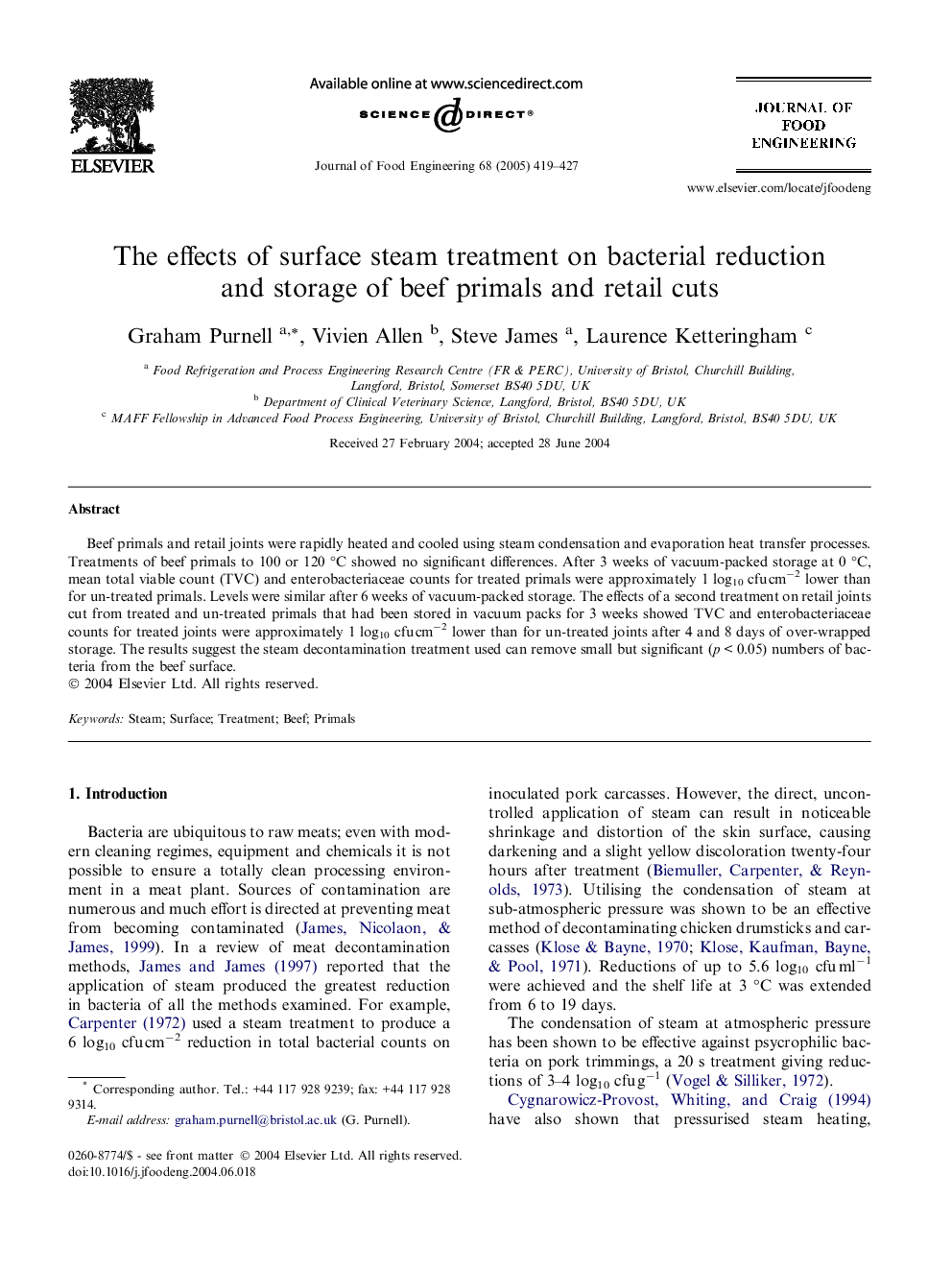| Article ID | Journal | Published Year | Pages | File Type |
|---|---|---|---|---|
| 10278688 | Journal of Food Engineering | 2005 | 9 Pages |
Abstract
Beef primals and retail joints were rapidly heated and cooled using steam condensation and evaporation heat transfer processes. Treatments of beef primals to 100 or 120 °C showed no significant differences. After 3 weeks of vacuum-packed storage at 0 °C, mean total viable count (TVC) and enterobacteriaceae counts for treated primals were approximately 1 log10 cfu cmâ2 lower than for un-treated primals. Levels were similar after 6 weeks of vacuum-packed storage. The effects of a second treatment on retail joints cut from treated and un-treated primals that had been stored in vacuum packs for 3 weeks showed TVC and enterobacteriaceae counts for treated joints were approximately 1 log10 cfu cmâ2 lower than for un-treated joints after 4 and 8 days of over-wrapped storage. The results suggest the steam decontamination treatment used can remove small but significant (p < 0.05) numbers of bacteria from the beef surface.
Related Topics
Physical Sciences and Engineering
Chemical Engineering
Chemical Engineering (General)
Authors
Graham Purnell, Vivien Allen, Steve James, Laurence Ketteringham,
